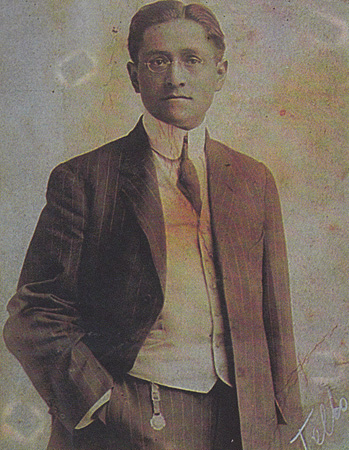
RICHARD L. BURGER (ed.). The life and writings of Julio C. Tello: America's first indigenous archaeologist. x+364 pages, 148 illustrations. 2009. Iowa City (IA): University of Iowa Press; 978-1-58729-783-0 paperback $39.95.
Review by César Astuhuamán
Escuela de Arqueología, Universidad Nacional Mayor de San Marcos, Lima, Perú.
(Email: castuhuamang@unmsm.edu.pe)

In the first decade of the twentieth century, archaeological research in Peru was only just beginning. While some well-recorded excavations were undertaken by Max Uhle, Peruvian archaeology suffered from a lack of proper institutional organisation, a shortage of investigators, extensive looting of the cultural heritage and a lack of economic support on the part of the Peruvian State. It is in this adverse context that Julio C. Tello (1880–1947) emerged and rose to prominence in Peruvian archaeology. It is important to note that Tello's influence is not only expressed in his own research on Chavín and Paracas and the publication of Origen y desarrollo de la civilización andina (1942) but also in educating the first generation of Peruvian archaeologists, setting up several museums in Lima and starting academic journals. As a deputy to the National Congress and an inspirational figure for the Peruvian indigenismo movement, he greatly raised the profile of archaeology, and of the past in general, at a national and international level. For these reasons, Tello has been called the 'father of Peruvian archaeology'; the book under review, which proceeded from the 1985 commemorative project of the Institute of Andean Research, is devoted to him for his crucial role in this institute's history as well as the Andean past as a whole.
The book's editor decided '...to devote the first section of the volume to three chapters that place Tello's career within the broader social and intellectual context of his day and offer an initial evaluation of how his body of work has influenced subsequent generations of scholars in Peru and abroad...' (p. 3). This first part features biographical essays by Richard Daggett, the preeminent contemporary biographer of Tello, John Murra and Richard Burger. Some cross-references between Burger's article and the second part of the book are useful to contextualise Tello's writings. The first of these chapters, by Daggett, explores the relationship between archaeology and politics, a constant in Tello's life. In previous biographies this relationship was narrated in part by his friends and colleagues (Mejía Xesspe, Rebeca Carrión, William Strong and Samuel Lothrop), and these formed the basis for Tello's recent official biographies by Luis Lumbreras, Alfonso Jaguande and César Ángeles. In contrast, Daggett's biography explores new sources and uncovers unknown aspects of Tello's life; the chapter in the book under review follows a first approach published in Spanish in 2005 (Astuhuamán & Daggett 2005).
The second part, 'Selected writings by Julio C. Tello', contains eleven articles that were chosen '...to illustrate the breadth of his interest and research...' (p. 3). Indeed Tello's publications remain largely unknown and are not fully understood by contemporary Peruvian archaeologists. Furthermore, some relevant writings appear here translated into English for the first time. This collection thus achieves its second aim, that of showing Tello's vision to the next generation, but it fails in its intention to explore the relationship between the life of Tello and his writings. The articles selected are not arranged in chronological order and are not linked to the socio-political and historical context in which they were written. For instance, the article entitled 'Prehistoric Trephining among the Yauyos of Peru', dated to 1912, can be tracked back to 1908, when Tello submitted his undergraduate dissertation on the antiquity of syphilis in Peru, suggesting that it was ancient syphilis which had prompted the need for trepanation evident on many pre-Columbian skulls. The theme of ancient trepanation and skull deformation was one that continued to fascinate Tello and to which he later returned for his doctoral thesis submitted in 1918. Tello's archaeological interpretations were partly influenced by growing Peruvian nationalism, and partly by his culture-historical approach, but this could be better understood if put into the historical context of his proposals about spatial, cultural and chronological divisions elaborated to explain Prehispanic historical processes in the Central Andes.
The third part, 'An annotated bibliography of Julio C. Tello', by Richard Daggett and Richard Burger, is a detailed, chronologically-ordered list of references, including newspaper interviews and posthumous publications, based on the San Marcos University Tello Archive and other sources. A useful index completes the book.
Though I agree with Burger that '...Tello must be considered the most successful indigenous archaeologist to have emerged in the Americas...' (p. 70), some historical aspects are not developed in this book and should be studied more extensively, for instance the academic colonialism that characterised Latin America during the first half of the twentieth century. Tello and other indigenous archaeologists were part of this environment, the 'Tello School' being displaced by foreign colleagues and theoretical approaches which drove the agenda for archaeological research in Peru after his death. However, during the first decades of the twenty-first century a new Peruvian nationalism is emerging, and a critical re-reading of Tello's writings will be necessary.